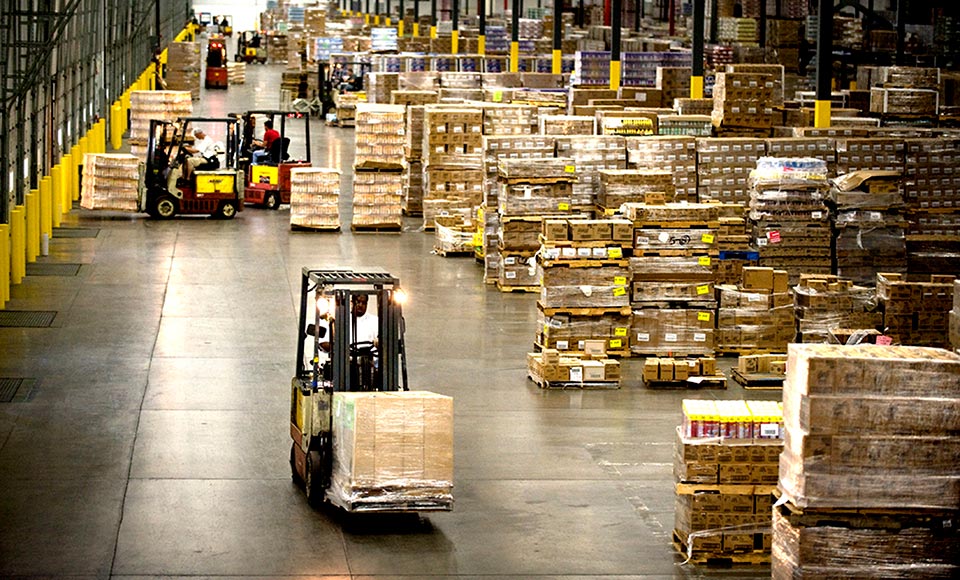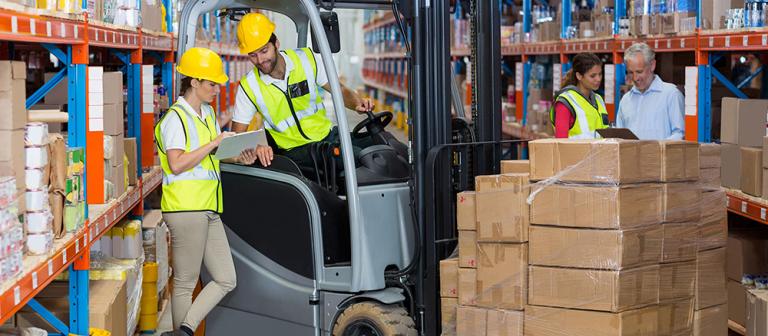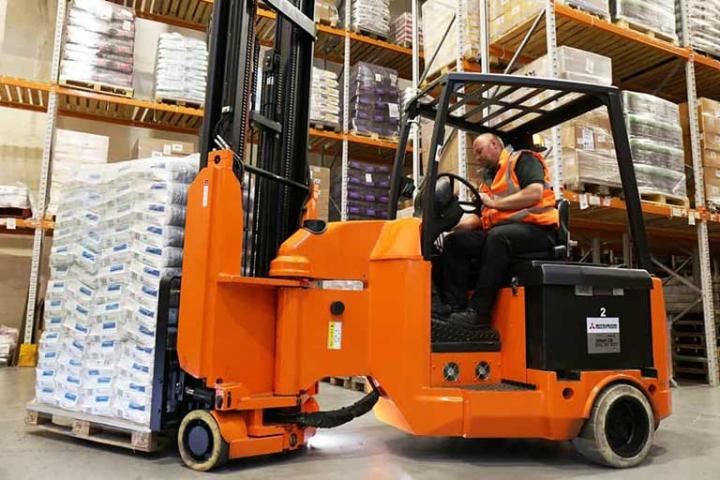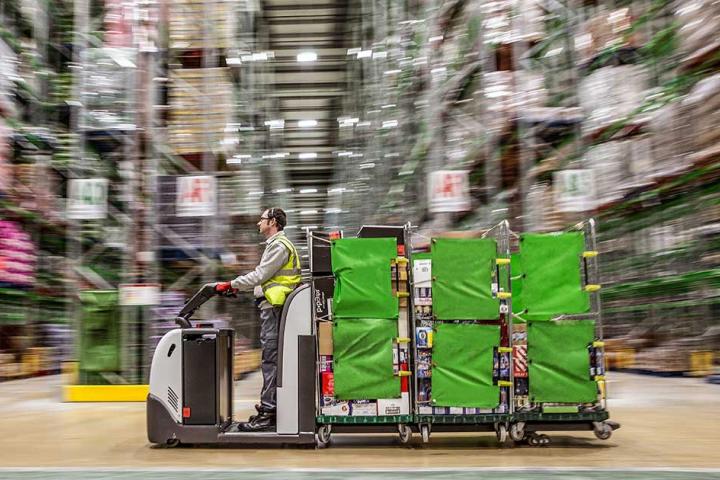First, we'll explain what a forklift truck licence is not.
There is a lot of confusion about how to obtain a forklift truck licence and what they permit the holder to do. The first thing to make clear is that a forklift truck licence is not a piece of paper you keep in your drawer or take to a job interview. So what is a forklift truck licence and how do you get your hands on one?
- A forklift truck licence is not something handed to you on successful completion of a test permitting you to drive any forklift truck.
- A forklift truck licence is not a document to keep on record to prove that you are authorised to drive an employers forklift trucks.
- A forklift truck licence is not based on the same concept as a traditional driving licence.
- A forklift truck licence is not a document at all because it does not exist.
Wouldn't a forklift truck license keep things simple?
The reason a forklift truck licence does not exist is that there are too many situations that could occur from one site to another that a forklift driver is not prepared for. Every site is different, the trucks are likely to be different, the environment will be different. A single forklift truck licence would not take all these factors into account and wouldn't, therefore, guarantee the expertise of each forklift truck operator in all conditions.
Forklift trucks are extremely dangerous pieces of equipment, not only that but the environment in which they operate can be just as dangerous. Add to that fact there could be many pedestrians also working in the same area this could potentially be a recipe for disaster and sadly often is.
It's for this same reason for example, that a driving license issued for a small family car does not also allow you to drive a motorcycle, a lorry, a tractor, a bus or an HGV. This is because specific training needs to be taken in order to qualify you for one of the other modes of transport. This is because each mode of transport requires a different skillset in order to be operated in a safe and responsible manner.
The closest thing you will get to a forklift truck licence is written authorisation from an employer stating that you are permitted to drive their forklift trucks on their premises and only under strict conditions. Learning to drive a forklift truck requires incremental steps and once you’ve had authorization from an employer that authorisation does not transfer to any other employer.

Why basic training is not enough.
The first step on the path to obtaining a ‘forklift truck licence’ is a basic training course. A basic training course only serves to introduce you to the operation of a forklift truck under generic conditions. It can not prepare you for a career in all possible conditions that you might find yourself working in.
Another way of looking at it is to imagine you're in the army and you’ve just passed your basic training. You then stroll up to a sergeant, pointing to a tank and say “I’d like to drive that please, I’ve passed my basic training!” You could expect at the very least to be shouted at and possibly made to do 100 pushups with your face 2 inches from being soaked in a puddle. Really it's just common sense that additional training and progression are required before you could step foot in that tank.
Basic training in forklift truck terms is only the foundation on which you can then move on to more specific training. Yes, basic training does give you the skills to hop in a forklift truck, start it up and drive it up and down. The problems start when you try to execute a manoeuvre you’ve spent hours practising during basic training. This time though you are in a much more confined space with many distractions happening around you. Maybe you hadn’t noticed the pallet racking aisle is much narrower than what you’re used to. The pallet racking could get struck knocking the whole lot down, it crushes 10 people and costs the company millions in lost revenue. To add insult to injury someone ends up going to jail for it and I’m sure you wouldn’t want that on your CV.
Who is eligible to become a forklift truck driver
Potential forklift truck operators should be both physically and mentally fit to safely control and operate a forklift truck. They should have the potential to become competent operators, reliable and have a responsible attitude towards themselves and others. The Equality Act 2010 will apply so you should assess this on an individual basis. You may need to get medical advice and make reasonable adjustments to enable some disabled people to work as forklift truck operators. Over the minimum school-leaving age is also a prerequisite. If the work takes place in ports they must be at least 18 years old, unless they are undergoing a suitable course of training, supervised by a competent person. There are three recognised stages required to become a qualified forklift truck driver but they will not produce a forklift truck licence as stated above.>
Step 1 - Basic training
This training prepares the trainee for more specific advancement during a later stage. It typically includes full coverage of all the skill and knowledge required to safely operate the type of forklift truck and attachments the candidate will use. The course should typically take 3 - 5 days and should be conducted off-site. The trainee should be continuously assessed by the instructor to ensure they meet all the necessary standards required of them. At the end of the training, the candidate should demonstrate that they have acquired the practical and theoretical knowledge and skills necessary to operate a forklift truck. This is done by way of a test or tests which confirm the candidate has learnt and understood the course material.
Step 2 - Specific Job Training
Specific job training could be included as a continuation of the basic training course or undertaken separately. It will be adapted to the candidate's particular needs and repeated if and when the forklift truck type is changed. the following areas should be covered in the course:
- Knowledge of the operation and controls of the lift truck to be used, including any handling attachments and loads specific to the job.
- Inspection and servicing of that truck on a routine basis. It must be in accordance with the operator’s handbook or manufacturer’s instructions and must be reasonable for an operator to carry out.
- Practice using the truck in conditions the operator will meet at work.
- Instruction on-site rules and general emergency procedures. The use of PPE and devices including seat belts and eye and hearing protection. It should also cover working near overhead lines and other hazards.
- Training should cover the work to be carried out, eg loading particular types of vehicle with loads normally found at that workplace etc.
- Responsibilities and custody arrangements for keys.
Step 3 - Familiarisation Training
Familiarisation training is the third stage of training, which should be carried out on the job. Someone with the appropriate knowledge should supervise at all times to provide instruction and ensure safety.
- The driver should demonstrate the skills learned during both basic and specific training. Tasks should be simple at first then moving on to more complex ones.
- The driver must become familiar with all the forklift truck activities of the employer including the movement of pallets.
- Familiarisation with the site layout and other features of the work which it is not possible to teach off the job.
Employer Authorization
Written authorisation should then be issued by the employer once the trainee has successfully completed all three stages of the training. Only operators with written authorization should operate forklift trucks but remember a comprehensive forklift truck licence does not exist.
The Law
The Provision and Use of Work Equipment Regulations 1998 (PUWER) place certain requirements on employers. You must make sure that all people who use, supervise or manage the use of work equipment have received adequate training, which includes:
- The correct use of the equipment;
- Any risks from its use;
- The precautions to take.






